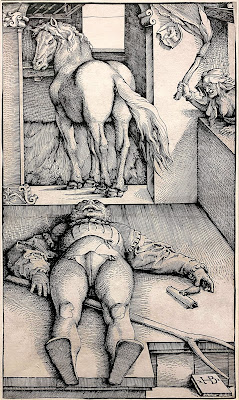The video tries to answer whether John F. Kennedy meant that he was a jelly-filled doughnut when in 1960, he said in his famous Berlin speech, "Ich bin ein Berliner!".
 |
Watch the video and judge for yourself.
Let us rather exercise the case with the word Freiburger. When I say I am a Freiburger, this is not true because I wasn't born in Freiburg, didn't go to school there, and moved to the city only after my retirement.
If I were born in Freiburg, I would always claim, "Ich bin Freiburger" for saying, "Ich bin ein Freiburger" would stress the point that I'm a Freiburger and not, e.g., a Hamburger. I am neither because I wasn't born in Hamburg, although I went to school in the Hanseatic city for nine long years.
So if you are from Hamburg and not a Quiddje* like me, you would always claim, "Ich bin Hamburger" because saying, "ein Hamburger" is indeed likely to be misunderstood.
*Genuine Hamburgers call non-Hamburgers Quiddjes.
Now, what about Freiburgers? This year is Freiburg's 900th anniversary, so let us look into a fundamental document of 1218 in which the following is written about Freiburg's founding father, "Conradus Friburcum in Brisgaw construxit ac libertate donavit ...... Henrico imperatore confirmante et cunctis principibus corone Romani imperii qui aderant consentientibus (Conrad built Freiburg and gave freedom to the settlement ... this was confirmed by Emperor Heinrich, and all crowned heads of the Roman Empire agreed). This relatively late statement insisting on the emperor's legalization is fundamental because, in 1120, Duke Conrad had founded Freiburg somewhat autocratically.
Be it as it may, the salient word here is freedom (Freiheit) which is part of the name of Freiburg that has become a hallmark. I would stress the syllable "free" in Freiburg, although in addition to the hallmark, we now find a trademark when eating FreiBurgers in Freiburg.
The makers of these delicious burgers, not prefabricated but freshly prepared while U wait, carefully distinguished between der Freiburger and derfreiBurger.
Let us rather exercise the case with the word Freiburger. When I say I am a Freiburger, this is not true because I wasn't born in Freiburg, didn't go to school there, and moved to the city only after my retirement.
If I were born in Freiburg, I would always claim, "Ich bin Freiburger" for saying, "Ich bin ein Freiburger" would stress the point that I'm a Freiburger and not, e.g., a Hamburger. I am neither because I wasn't born in Hamburg, although I went to school in the Hanseatic city for nine long years.
So if you are from Hamburg and not a Quiddje* like me, you would always claim, "Ich bin Hamburger" because saying, "ein Hamburger" is indeed likely to be misunderstood.
*Genuine Hamburgers call non-Hamburgers Quiddjes.
Now, what about Freiburgers? This year is Freiburg's 900th anniversary, so let us look into a fundamental document of 1218 in which the following is written about Freiburg's founding father, "Conradus Friburcum in Brisgaw construxit ac libertate donavit ...... Henrico imperatore confirmante et cunctis principibus corone Romani imperii qui aderant consentientibus (Conrad built Freiburg and gave freedom to the settlement ... this was confirmed by Emperor Heinrich, and all crowned heads of the Roman Empire agreed). This relatively late statement insisting on the emperor's legalization is fundamental because, in 1120, Duke Conrad had founded Freiburg somewhat autocratically.
Be it as it may, the salient word here is freedom (Freiheit) which is part of the name of Freiburg that has become a hallmark. I would stress the syllable "free" in Freiburg, although in addition to the hallmark, we now find a trademark when eating FreiBurgers in Freiburg.
 |
| Watch Red Baron taking the photo. |
 |
| Advertising in bad Denglish all over Germany |
Remember that a FreiBurger is not a free burger but is somewhat more expensive than the usual stuff. The quality of a FreiBurger is worth any additional Eurocent.
*



















































